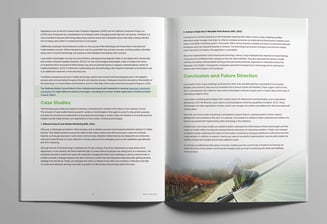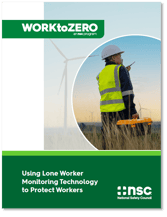Blackline Safety is a technology leader driving innovation in the industrial workforce through IoT (Internet of Things). With connected safety devices and predictive analytics, Blackline enables companies to drive towards zero safety incidents and improved operational performance. Blackline provides wearable devices, personal and area gas monitoring, cloud-connected software and data analytics to meet demanding safety challenges and enhance overall productivity for organizations with coverage in more than 100 countries. Armed with cellular and satellite connectivity, Blackline provides a lifeline to tens of thousands of people, having reported over 200 billion data-points and initiated over seven million emergency alerts. For more information, visit BlacklineSafety.com and connect with us on Facebook, Twitter, LinkedIn and Instagram.
New Lone Worker Safety Research Recommends Monitoring Technologies to Save Lives
Blackline Safety, Leader in Connected Gas Detection & Lone Worker Safety
October 20, 2023
NSC whitepaper identifies strategies for protecting lone workers with a case study that features Blackline Safety’s connected safety wearables

As the number of lone workers continues to rise—with an estimated 15% of today’s employees reportedly working by themselves (Verdantix, 2021, Strategic focus: Reducing lone worker injury and fatality risks)—so to do concerns about these workers’ safety.
Recognizing the severity of the issue, National Safety Council (NSC) has released new data about how to take action to protect employees who operate predominantly out of sight and sound of their colleagues—and who, as a result, face increased likelihood and severity of incidents. And Blackline Safety’s lifesaving technology is showcased!
“According to a 2021 survey, nearly 70% of organizations reported a safety incident involving someone working by themselves in the past three years, and 1 in 5 of these incidents were described as 'quite or very severe.”
- Katherine Mendoza, senior director, workplace programs, NSC.
As part of its Work to Zero initiative, earlier this month NSC released its Using Lone Worker Monitoring Technology to Protect Workers white paper to help employers identify and implement new solutions to keep workers safe. Leveraging academic research and case studies, the whitepaper provides a playbook for understanding the unique hazards isolated workers face and how industry-specific technology can be used to save lives and prevent injuries.
Three key benefits for introducing worker monitoring technologies in remote environments are identified:
1. Decreased emergency response times: Many lone workers operate in areas with no cell phone coverage. Monitoring devices equipped with GPS capabilities and two-way communication capabilities bridge this gap, allowing immediate response to emergencies.
2. Real-time safety alerts: Lone worker devices can be used to monitor environmental conditions and a worker’s physical condition in real-time, alerting wearers to hazardous situations, such as gas emissions, when detected so they can pre-emptively intervene.
3. Increased cost-savings: Monitoring devices streamline communication and enhance efficiency by eliminating the need for check-ins via email or phone calls. 
Blackline Safety’s partnership with utility customer NiSource is one of two real-life use cases showcased in the white paper. NiSource adopted Blackline Safety’s G7 wearable devices enterprise-wide to mitigate on-the-job risks, including gas exposure, falls, and working alone in remote areas. G7s are intrinsically safe and include fall and no motion detection, two-way voice and text messaging, push-to-talk capabilities, gas detection and location technology. Already the devices have been used to help NiSource get in front of a variety of hazards—from high CO levels to a boiler exhausting improperly.
“We couldn’t be more thrilled to be included as part NSC’s whitepaper and the important considerations for lone worker safety leadership it explores. Our award-winning cloud-connected G7 wearable is industry-leading in many ways, including being the world’s first connected gas detector and lone worker safety monitor certified to the newly upgraded BS 8484:2022, the standard that underpins the UK’s lone worker safety leadership.”
- Christine Gillies, Chief Product and Marketing Officer, Blackline Safety
Get In Touch
Let’s start a discussion about your safety challenges and needs.
Related Blog Posts
Real-Life Incident: Mason’s Story — High H2S Exposure
November 25, 2025
“Shortness of breath. Request EMS to the location.” How Real-Time Gas Detection Led to a Quick Save Exposure to toxic gases can go from a strange...
Real-Life Incident: Gerry’s Story: Alone in the Boiler Room With CO
October 21, 2025
When a routine patrol became a potential gas poisoning tragedy, quick action and life-saving technology made all the difference. It was a routine...
Real-Life Incident: Brian’s Story - Containing a Texas Brush Fire
August 26, 2025
How quick action stopped a blaze from spreading, safeguarding nearby neighborhoods In a farming community in rural Texas with a population fewer...




